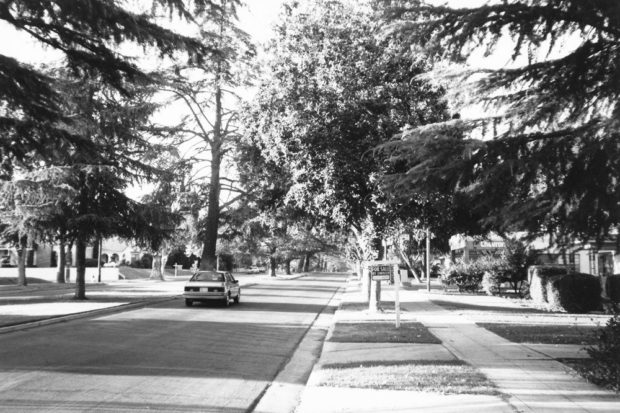
By Rubén Casas
Working from the premise that public space—land that is available and accessible to everyone—has a large effect on the overall civic nature of a community, how will the city’s intention to sell land in central Fresno (the Tower District) to finance a new building in north Fresno affect the city?
This is a pertinent question given that local neighbors are asking for that land to be turned into a park. In addition, the city has signaled that it intends to address the city’s dire lack of parks and green space through a new Parks Plan. This new plan is meant to address the notoriously embarrassing disparities that have for a long time characterized Fresno, especially its southwest areas.
First, there is actual financial cost represented in this action: It is not merely that a government is exercising its right to allocate public resources as it sees fit, it’s that the city is doing so within a larger context in which the whims of one part of the city are indulged, again, over the needs of another.
We are talking about selling public assets in a part of the city that historically has been ignored by civic and business leaders to build something new. This in a part of the city that, for a long time, has drawn disproportionately from public coffers to sustain a desire to get away from central and south Fresno. People’s desire to move further and further away from the city’s core requires the city to build more roads, more electrical grid, more sewage and water mains. People who move away from the city’s core want their parks, too.
This sprawl largely has been sustained at the cost of the city’s core and the people who remain there. That there is not money in the general fund to build or maintain parks is a direct result of sprawl and the way it disproportionately takes and takes.
But there’s a symbolic cost to the city’s differential seeing and valuing, too. White flight remains an active process in Fresno even as other cities seek to counteract the noxious ways that racism transforms cities. Taking from south Fresno to build something for north Fresno further signals that those who live in south Fresno are less deserving than those who live in north Fresno.
This is already well understood by residents of south Fresno, as well as those who venture there to attend an event at the Tower Theater or the Saroyan Theater. Parks there are fenced in and ill-maintained; they are disrespectful to the neighbors that are meant to be served by them, and they send a strong signal to those who live in other parts of the city that it is not a place they want to visit, much less live.
The message that parks in south Fresno send to residents and visitors alike is wrong. There are many reasons why south Fresno is desirable, not the least of which is the scale at which it was built (walkers have primacy there, not cars), the character and charm of its neighborhoods, its entertainment and dining options, and most certainly, its people.
Developers have taken much of the blame for the unseemly ways the city has been permitted to grow. Truly, this blame is to be shared among the city’s elected officials, its media and news organizations, and by other institutions in the city, as well. Developers couldn’t do what they do without a strong narrative about the “dangers” of living or being in south Fresno, a narrative that’s collaboratively written by many powerful players in the city.
It’s a persuasive and profitable narrative to be sure, but it’s a costly one as well, and it might result in the city’s ultimate undoing.
Reversing course and keeping an asset that currently exists in south Fresno by turning it into a park, as local residents want, surely will not fix the longstanding unjust conditions in the city, but it will signal that the city’s leadership is authentic in its plan to build more parks where they are needed––and a strong indication that the city’s leaders actually see and value south Fresno.
*****
Rubén Casas is an assistant professor of English at Fresno State, and he serves on the Fresno Filmworks board as a member of the Marketing Committee.
